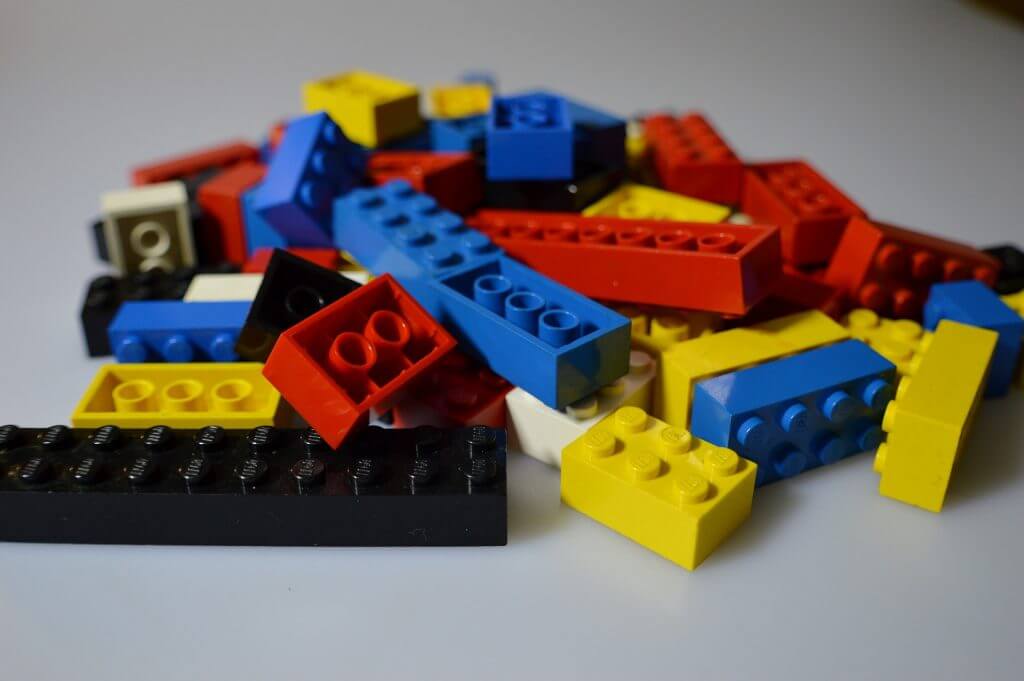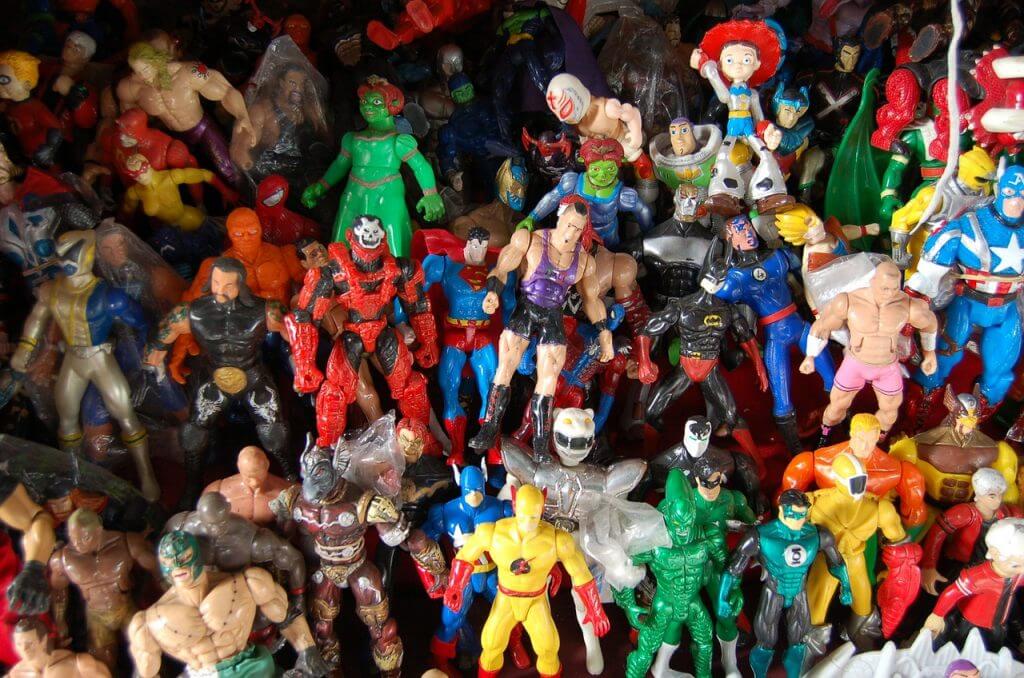Every child has that beloved toy they once couldn’t live without, whether it’s a raggedy teddy bear or a forgotten action figure. Yet, as children grow up, these toys often find their way into storage or landfills. But what if there’s a profitable and sustainable way to give these old toys a new lease of life?
This article dives deep into how one can make money recycling old toys, the growing interest in vintage toys, and how you can tap into this booming market.
Table of Contents
The Goldmine of Vintage Toys

As trends recycle and nostalgia grows, vintage toys from past decades are seeing a resurgence in demand. These items can fetch a hefty price on online auction sites and specialty stores.
High value toys where you can save money recycling include original LEGO sets, Cabbage Patch Kids, 1990s Polly Pocket and Tamagotchi (first edition).
Make Money Recycling and Reselling Old Toys
Not all old toys might classify as vintage. However, with a touch of creativity, they can be transformed into decorative items, jewellery, or even furniture. Crafty entrepreneurs are breathing new life into discarded toys, recycling and making them trendy again.
10 Tips on How To Value Vintage or Old Toys
Valuing vintage or old toys can be an exciting journey, rather like a treasure hunt. Whether you’ve discovered old toys in your attic or are into old toy collecting, understanding the value of these items is paramount. Here’s a comprehensive guide on how to value old toys:
- Understand the Factors Influencing Value
- Rarity: Generally, the rarer the toy, the more valuable it is.
- Condition: Toys that are in mint condition, especially with original packaging, often fetch higher prices.
- Age: Older toys, especially antiques (over 100 years old), can be more valuable.
- Demand: Toys from popular franchises or with significant nostalgic value can command higher prices.
- Historical Significance: Toys associated with a particular era, event, or celebrity can increase in value.
- Completeness: Sets that are complete or toys with all their original parts will be worth more.
- Research Online Auction Sites: Websites like eBay provide a treasure trove of information. By searching for your toy or similar ones, you can get an idea of current market prices. Pay attention to the ‘sold’ listings rather than just the ‘for sale’ prices for a more accurate estimate.
- Consult Price Guides: There are many collectible toy price guides available online and in print. These can offer average prices and provide detailed information about specific toy lines and their value determinants.
- Seek Expert Valuation: If you believe you have a particularly rare or valuable toy you can make money recycling or selling, consider getting it professionally valued. An expert will provide you with an accurate estimate based on their knowledge of the market and similar sales. Toy conventions or collector fairs often have experts available for valuations.
- Join Collector’s Forums and Groups: Online forums and social media groups dedicated to old or vintage toy collecting can be a great place to gain insights. Fellow collectors can offer advice, share their experiences, and provide ballpark figures on certain toys.
- Attend Toy Shows and Auctions: This is not only a fun way to immerse yourself in the world of toy collecting, but it also provides an excellent opportunity to see what collectors are willing to pay for certain items and so can really help you understand how you can make money.
- Check Retail Prices for Reissued Versions: Sometimes, toy companies reissue popular toys from the past. While these reissues may not be as valuable as the original, their retail price can give you an idea of the current demand and popularity of that toy line.
- Factor in Authenticity: Beware of replicas or counterfeits. Authentic toys will always be more valuable. If you’re unsure about the authenticity, consult with experts or look for distinguishing features that separate genuine products from fakes.
- Consider the Regional Variation: A toy might be common in one country but rare in another, affecting its value. For instance, a toy released only in the UK might be more valuable in the US due to its rarity.
- Document Everything: If you’re serious about determining the value of old toys, keep a record. Note the toy’s condition, any unique features, and where and when you acquired it. This documentation can prove invaluable, especially if you decide to sell or insure the toy.
So, as you can see, valuing old toys requires a mix of research, expertise, and sometimes a bit of intuition. Remember to approach the valuation with an open mind: while not every old toy will be worth a fortune and worth trying to save money recycling it, each still carries its unique story and sentimental value.
How To Sell Vintage Old Toys

Selling old vintage toys can be both rewarding and profitable and can give you a great sense of achievement by being able to make money recycling them. To ensure you get the best value for your items and have a smooth selling process, here are some suggested steps follow:
- Assess the Condition
- Examine the toy’s condition as it greatly impacts its value. Document any wear, damages, or missing pieces.
- Keep in mind that original packaging can significantly increase a toy’s value.
- Research the Market
- Look up similar items on platforms like eBay or Etsy to get a sense of their current market value.
- Research the demand for your particular toy. Toys from popular brands or franchises often fetch higher prices.
- Clean and Present Well
- Gently clean the toys to make them more appealing. However, be cautious not to damage them or reduce their value.
- Take clear, well-lit photographs from multiple angles to showcase the toy’s condition and features.
- Choose Your Selling Platform
- Online Auction Sites: Websites like eBay are popular platforms for selling vintage toys. They provide a vast audience, but be aware of listing fees and competition.
- Online Sites: There are a number of sites specialising in certain toys that may be worth considering, for example you can sell Lego on Toy-Exchange.co.uk and Scalextric on ScaleModels.co.uk
- E-commerce Platforms: Websites like Etsy cater to vintage items and handmade goods.
- Classified Ads: Websites like Gumtree or Craigslist allow you to sell directly to local buyers.
- Specialist Dealers or Shops: Some dealers specialise in vintage toys and may offer to buy directly from you. This method is quicker but might not yield the highest return.
- Toy Fairs and Conventions: Renting a stall at a local toy fair can put your items in front of dedicated collectors.
- Boot fair or Boot Sale: It might mean an early start, but filling up your car with all your secondhand toys and heading off to a local car boot sale is a sure way of making some cash. This route is more about volume being sold rather than value per sale. Most people at boot sales are looking for very cheap bargains and so it’s not the ideal place to go if you’re trying to get top price to make money recycling your valuable toy. It is though a great place to go if you’ve lots of low value toys to recycle.
- Set a Fair Price
- Based on your research, set a competitive price. If using auction sites, you can set a reserve price to ensure you don’t sell below a certain threshold – equally whilst the aim might be to save money recycling, don’t try and over inflate the value, if you do you risk not actually selling it.
- Remember to factor in any fees or commissions.
- Write a Detailed Description
- Provide information about the toy’s brand, year of manufacture, any historical relevance, and its condition.
- Be honest about any damages or missing parts.
- Communicate with Buyers
- Be prepared to answer questions about the toy.
- If a potential buyer makes an offer, consider it carefully, especially if the item has been listed for a while.
- Pack Carefully for Shipping
- Use bubble wrap or other protective materials, especially for fragile items.
- Consider insuring the package, especially for high value items.
- Be Aware of Scams
- Be wary of buyers who offer to pay more than the asking price or who ask to use a third-party payment system.
- For local sales through classified ads, meet in a public place and consider accepting only cash.
- Keep Records
- If you’re selling multiple items, keep records of sales, expenses, and any communications. This will be useful for you to monitor how you’ve been able to make money recycling, and have clear information on the profits you’ve made for yourself and for tax purposes.
- Consider Donating
- If some toys don’t sell, consider donating them to charity shops or children’s hospitals. You’ll be giving them a new home and may also benefit from a tax deduction which indirectly means you’re still able to make money recycling them.
Is it Worth Insuring Old or Vintage Toys?

Insuring old or vintage toys can be a wise decision but it does depend on various factors.
Reasons to Insure Old or Vintage Toys
- High Monetary Value: If your toys are high value items and worth a significant amount, insuring them can provide financial protection against loss, theft, or damage.
- Sentimental Value: While insurance can’t replace the emotional attachment you have to a toy, it can provide compensation which might allow you to purchase a replacement.
- Potential Increase in Value: Vintage toys can appreciate over time. What might seem of modest value now could become much more valuable in the future. Make sure your regularly review your insurance values to ensure you are not underinsured.
- Exposure to Risks: If you frequently transport your toys (e.g., to shows or exhibitions) or loan them to museums or galleries, they’re exposed to more risks and might benefit from insurance coverage.
- Peace of Mind: Knowing your collection is insured can provide peace of mind, especially if it represents a significant investment of time, money, and emotion.
Things to Consider Before Insuring
- Cost vs. Benefit: Insurance premiums can add up. Ensure that the cost of insuring your collection is justified by its value and the potential risks it faces.
- Valuations: Insurance companies often require professional valuations to determine a toy’s value. This can be an additional cost, but it’s essential for ensuring you have the right amount of coverage.
- Coverage Details: Not all policies are the same. Some might cover only theft, while others include accidental damage or natural disasters. Make sure you understand what’s covered and what isn’t.
- Specialist high value insurance or standard home insurance: Depending on the value your collection, you may need to buy high value insurance.
- Deductible or Excess: Check if there’s a deductible or excess (an amount you pay out of pocket before insurance kicks in). A higher deductible or excess usually means a lower premium, but you’ll pay more if you make a claim.
- Claims Process: Understand the insurer’s claims process and read reviews on how good their clients feel they are with this service. Are they known for fair and prompt settlements? Do they have experience with vintage toy claims?
- Regular Reviews: As the market for vintage toys fluctuates, it’s wise to review and adjust your coverage periodically. What was accurate a few years ago might no longer reflect your collection’s current value.
In conclusion, insuring old or vintage toys is a personal decision influenced by your collection’s value, potential risks, and your comfort level. If your collection holds significant value or sentimental importance, insurance is worth considering.
You may find it beneficial to use an insurance broker if you are looking to insure a high value collection or individual items that are worth a significant sum of money.